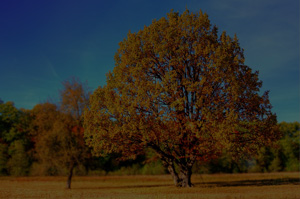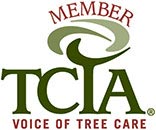As trees mature, their branches can become so heavy that the trunk can't support their weight. This puts stress on the trunk, increasing its risk of falling. This can lead to injury and property damage.
What is tree cabling?
Cabling is a method of stabilizing a tree that is growing in an unsustainable manner. High-strength cables connect a compromised limb and a stronger limb to limit movement. The cable is flexible and doesn’t restrict movement or growth. This creates a support system for weak branches and guides a tree’s growth in the right direction.

Candidates for cabling include trees with trunks growing in opposite directions. Multi-trunked trees can result from storms or age and appear to be V- or U-shaped. This split creates a weak area that can cause healthy trees to deteriorate.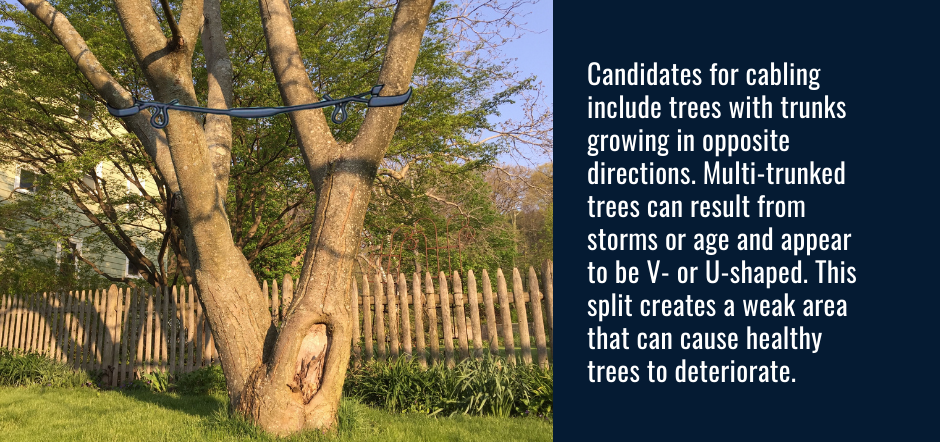
While tree cabling seems simple, you’ll need to hire a professional. After you contact an arborist, here's what to expect:
- First, the arborist will drill a hole into the compromised limb and the stronger limb. A cable is then cut to the right length and thread through both holes
- The arborist will use a pulley system to pull the stems together until the cable is taught. If the cable is too tight, it'll put more strain on the weak tree limb. If the cable is too loose, it won't provide the right support. Once the arborist finds the right position, they'll set it and add a finishing cap.
Benefits of tree cabling
Inclement weather and structural failure can bring the healthiest of trees toppling down. Adding support to compromised trees can save both your home and landscape.As trees grow, limbs can overextend as they struggle to find sunlight and nutrients. One compromised limb can endanger the entire tree, causing splits and weak spots.When trees have split or cracked limbs, decay, or a poor root system, there’s risk of structural failure. Improper pruning can also lead to structural failure. When these weak areas fail, large limbs or entire trees may come crashing down. Cables redistribute the weight, allowing the limbs to support each other.
Prevention
Cabling can prevent long-term problems like inefficient growth and weak branches.A tree with a compromised trunk or branch is like a human with a cut on their skin. In the same way that an open wound is an entrance point for bacteria, damaged trees let in harmful fungi. Proper cabling can help a tree close the wound and keep it healthy.If you notice weak spots or crotches, tree cabling can reduce the risk of limb failure. This is true even if the tree is healthy. Cables can prevent future problems by reducing stress from wind, ice or snow, and foliage.
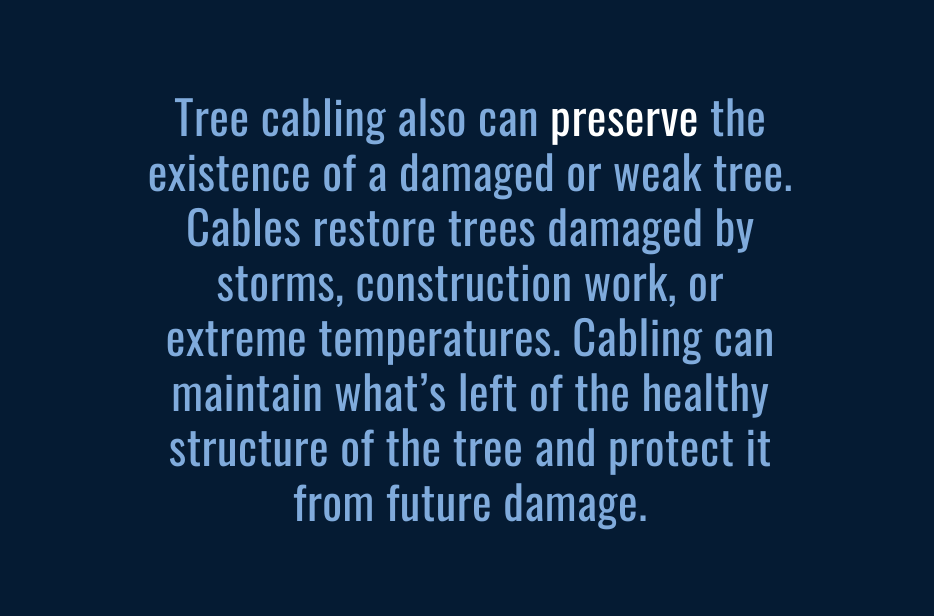 Preservation
Preservation
Tree cabling can preserve the existence of a damaged or weak tree. Cables restore trees damaged by storms, construction work, or extreme temperatures. Cabling can maintain what’s left of the healthy structure of the tree and protect it from future damage.Not only can cabling preserve a tree’s structure, it can also preserve its appearance. Limbs on large trees will grow in various directions. If a tree loses a limb, it will appear unbalanced and nonsymmetrical. Cables encourage trees to grow in the right direction and establish stability.Some trees have overextending limbs because they're reaching for the light. In an urban environment this can be of concern as they pose a potential threat to people and property.
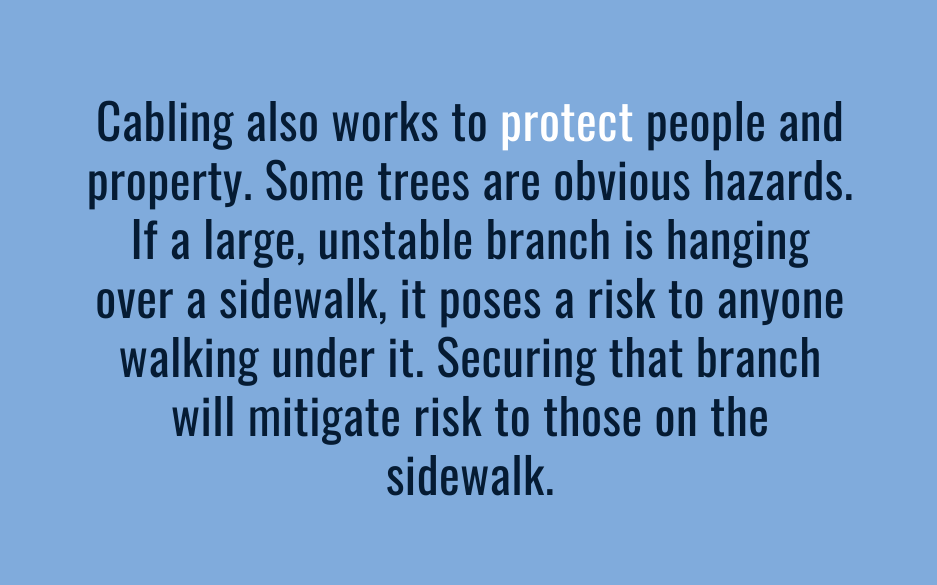 Protection
Protection
Cabling also works to protect people and property. Some trees are obvious hazards. If a large, unstable branch is hanging over a sidewalk, it poses a risk to anyone walking under it. Securing that branch will mitigate risk to those on the sidewalk.
Trees located near homes were likely planted there for a purpose. Whether to provide shade, block views, or prevent soil erosion. If the tree is multi-trunked or too heavy, cabling is a solution to keep the tree in its current location. Depending on how close the tree is to your home and how bad the damage is, tree removal may be the last resort.
Signs You Need Tree Cabling
Trees will grow toward the sunlight. But sometimes the light will lead a tree into compromising situations. If a tree is growing too close to your home or driveway, you may want to consider cabling.
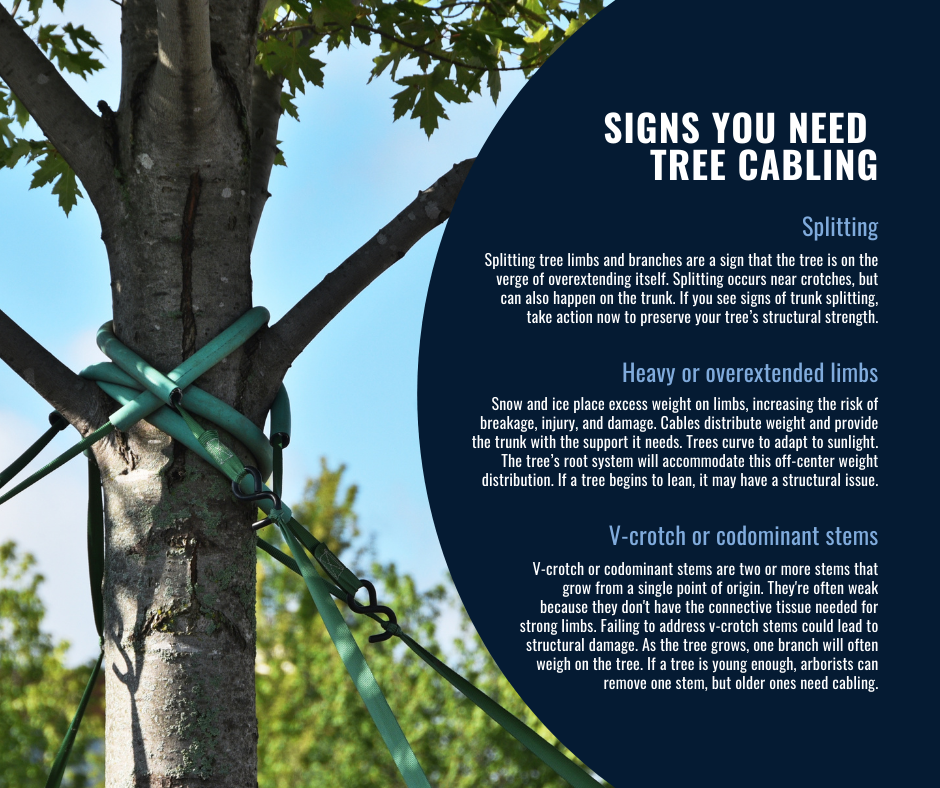
Splitting
Splitting tree limbs and branches are a sign that the tree is on the verge of overextending itself. Splitting occurs near crotches, but can also happen on the trunk. If you see signs of trunk splitting, take action now to preserve your tree’s structural strength.
Heavy or overextended limbs
Snow and ice place excess weight on limbs, increasing the risk of breakage, injury, and damage.Pruning is a preventative method to reduce the risk of compromised limbs come winter. In the fall, cabling protects trees from spores in the air.
Cables can also distribute weight and provide the trunk with the support it needs to thrive.
Trees have a little lean to them. A tree trunk curves because of the tree’s ability to adapt over time to the changing sunlight. The tree’s root system will grow to accommodate this off-center weight distribution. If a tree begins to lean or has cracked soil, it may have a structural issue.
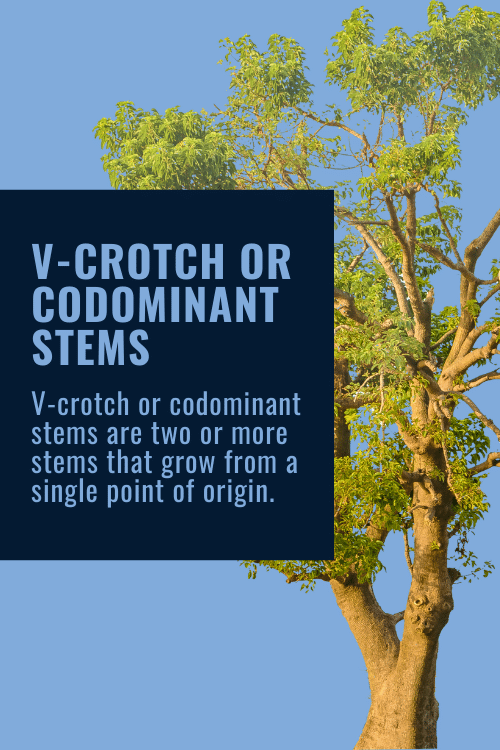 V-crotch or codominant stems
V-crotch or codominant stems
V-crotch or codominant stems are two or more stems that grow upward from a single point of origin. They usually create the image of a “V”, hence the name.
Failing to address v-crotch stems right away could lead to structural damage. They're often weak because they don't have the same connective tissue for strong limbs. As the tree grows, v-crotches become weak spots as one branch will often become weaker and weigh on the tree.
Recognizing and addressing v-crotch stems in young trees can support healthy development. If a tree is young enough, arborists can remove one of the stems, but older ones may need cabling.
Does your tree need cabling?
Improper cabling can cause girdling, which can be fatal. A professional will know where and how to position the cables to avoid girdling. Additionally, there's lots of tension to calculate when altering their structure through cabling. The average homeowner lacks expertise in this area. Finally, often the ideal spot to install a cable on a large tree is high up, and this involves climbing.
If you think a tree is in danger of falling, get in touch with Precision Landscape & Tree. Our arborists will provide a free inspection and determine if cabling is the best option.
